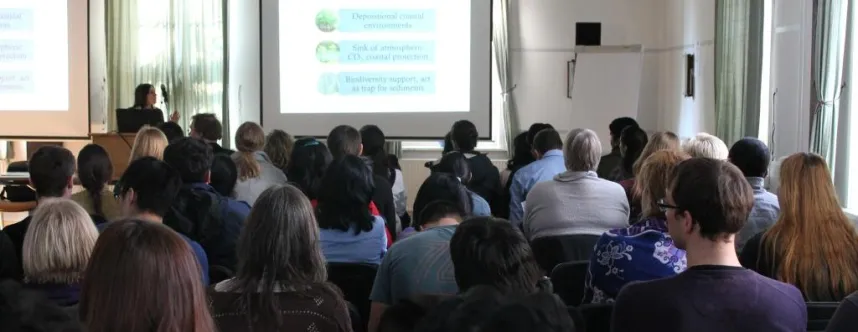MoLife Research Seminar - Lisboa
Research II - Lecture Hall
AIP56, an NF-κB cleaving toxin from Photobacterium damselae piscicida (Phdp)
AIP56 (apoptosis-inducing protein of 56 kDa) is a key virulence factor of Photobacterium damselae piscicida, a Gram-negative bacterium that infects marine fish. During infection, AIP56 spreads systemically and depletes macrophages and neutrophils, impairing the host phagocytic defense system and contributing to the genesis of the pathology. This bacterial protein has been defined as an AB toxin, with an N-terminal catalytic region, containing a conserved zinc-binding motif (HEIVH) responsible for its zinc-metalloprotease activity towards the p65 subunit of NF-κB and toxicity, and a C-terminal binding/internalization region, linked by an unstructured linker region and a disulphide bridge. We further showed that AIP56 reaches its intracellular target using a mechanism that is conserved between fish and mammalian cells: after binding to a still unidentified cell surface receptor, the toxin undergoes clathrin-dependent endocytosis and reaches early endosomes. While in endosomes, the toxin either undergoes acidic-pH-triggered translocation across the membrane into the cytosol or follows the endocytic recycling pathway and is recycled back to the extracellular medium. Based on limited proteolysis experiments, it has been proposed that the boundary between the AIP56 A and B domains was located at the linker region. However, although having a structural organization typical of single chain AB toxins, AIP56 does not require any type of activation to display enzymatic activity in vitro, and the integrity of the linker region between the two cysteine residues is needed for toxicity, suggesting that the linker is required for translocation and may be part of the AIP56’s translocation domain. In silico analysis of the AIP56 secondary structure suggest the presence of a potentially important region for translocation upstream the linker, comprising two helices (P210 to R230 and L235 to A246) and a conserved T1-like motif (ARVEAIQERD), shown to be involved in the initial steps of translocation of other toxins. Biochemical and cellular studies will help to define the boundaries of the AIP56 translocation domain. Point mutants were produced and used to identify key residues involved in AIP56 membrane translocation.
Talk will be held by:
Johnny Marques LISBOA - IBMC - Institute for Molecular and Cell Biology, Department of Immunology and Biology of Infection, Fish Immunology and Vaccinology Group, Rua do Campo Alegre 823, 4150-180 Porto Portugal
Further informatin by: Prof. Dr. Roland Benz, Professor of Biotechnology - Email: r.benz@jacobs-university.de - Tel: +49 421 200-3151 - Link to Homepage: https://www.jacobs-university.de/ses/rbenz
